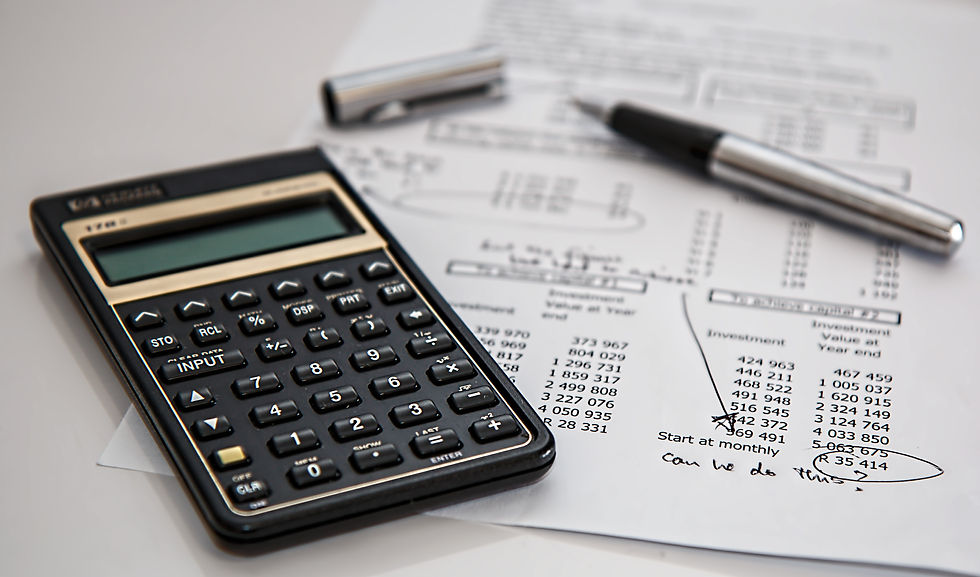Pensions & Tax – It’s easier than you’d think…
- Darren Pestell

- May 5, 2022
- 3 min read
Updated: Jul 10, 2023
Understanding your pension can be a complicated business at the best of times so trying to understand its relationship with the tax you pay can often only add to the confusion. However, there are a handful of key pieces of information, particularly in relation to personal and defined contribution schemes that if you can grasp, will help you ensure that you’re being tax efficient when it comes to your pension planning.
Making the most of tax relief

To help encourage people to save for retirement the government, under the current rules, offers tax relief on the contributions that you make to your pension, up to the level of your annual allowance (£40,000 per year for most people). This means that for every £80 you pay in the government tops this up by £20 to make an overall contribution of £100. For those who are higher rate (40%) or additional rate (45%) taxpayers further relief can be claimed via self-assessment meaning an additional £20 for 40% taxpayers or £25 for 45% taxpayers.
Taking too much too soon can be very tax inefficient
Pension Freedoms, introduced in 2015, changed the pension rules and allow you now to access the whole of your pension pot from age 55. The good news is the first 25% of any lump sum accessed is tax free however the remaining 75% would be taxed as income at your marginal rate. Of course, given you can access the funds at 55 most of us will still be working and therefore taking this lump sum can very easily cause a significant tax burden, particularly if the sum taken is sufficient to push your rate of income tax into the next band, perhaps into the higher rate (40%) or maybe even the additional rate (45%) band.
Planning how you drawdown funds can help you minimise your tax liability
Many people, post Pension Freedoms, now choose to access their pensions via “flexi-

access drawdown”. This facility provides the option of accessing your pension pot in a gradual and flexible way, to suit when you may need the funds. The remaining funds are left invested in the pension pot. By developing a plan and managing the amount you take, bearing in mind any other income you may have, you are able to ensure that any funds accessed are done so in a tax efficient way and helping thereby to extend the lifetime of the funds you have available for retirement.
Pension allowances – two important ones to be aware of:
The Annual Allowance, currently £40,000; this is the maximum that can be invested into your pension in the tax year and you will receive tax relief on. This allowance can be adjusted down if your income exceeds a certain level, typically an “adjusted” income more than £240,000 so only a few will be affected by this. If you exceed your annual allowance the excess contributions will be subject to a tax charge.
The Lifetime Allowance, currently £1,073,100; is the limit on how much you can build up in pension benefits over your lifetime while still enjoying the full tax benefits. If you go over this allowance, you’ll generally pay a tax charge on the excess.
Tax implications for your pension when you die

If you’ve chosen to access your pension via flexi-access drawdown and you die before the age of 75, your pension can be paid to a beneficiary free of tax. If you die after the age of 75, your beneficiaries will pay income tax on any money they take out of your pension, paid at their marginal rate (20%, 40% or 45%). If you have a final salary (defined benefit) pension, the scheme rules regarding benefits to beneficiaries often vary between one scheme and another, though any income received would be treated as taxable income.
If you’d like a review and analysis of your existing pension arrangements and your financial strategy, please get in touch for a FREE initial consultation so we can build a plan together for your financial future.

Our services relate to certain investments whose prices are dependent on fluctuations in the financial markets beyond our control. Investments and the income from them may go down as well as up and you may get back less than the amount invested. Past performance cannot be used as a reliable prediction of future performance.
Your home may be repossessed if you do not keep up repayments on your mortgage.






Comments